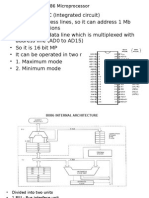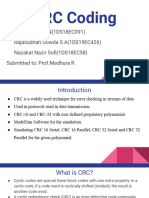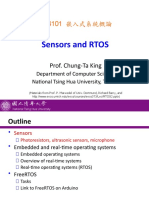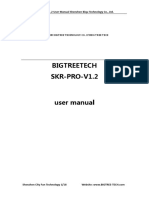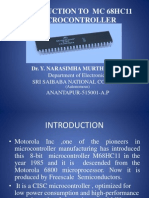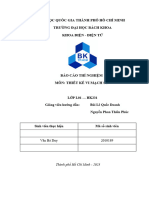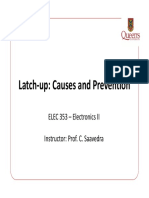0% found this document useful (0 votes)
404 views17 pagesChapter 1: 68HC11 MICROCONTROLLER: An of Blocks
The document summarizes the key components and programming model of the Motorola 68HC11 microcontroller. It describes the 68HC11 as an 8-bit microcontroller used in devices like washing machines. The main blocks of the 68HC11 include the CPU, memory (RAM, EPROM, EEPROM), and I/O units. The programming model involves accumulators, index registers, stack pointer, program counter, and condition code register used to store data and indicate the status of operations.
Uploaded by
Chinedu IsiukuCopyright
© © All Rights Reserved
We take content rights seriously. If you suspect this is your content, claim it here.
Available Formats
Download as PDF, TXT or read online on Scribd
0% found this document useful (0 votes)
404 views17 pagesChapter 1: 68HC11 MICROCONTROLLER: An of Blocks
The document summarizes the key components and programming model of the Motorola 68HC11 microcontroller. It describes the 68HC11 as an 8-bit microcontroller used in devices like washing machines. The main blocks of the 68HC11 include the CPU, memory (RAM, EPROM, EEPROM), and I/O units. The programming model involves accumulators, index registers, stack pointer, program counter, and condition code register used to store data and indicate the status of operations.
Uploaded by
Chinedu IsiukuCopyright
© © All Rights Reserved
We take content rights seriously. If you suspect this is your content, claim it here.
Available Formats
Download as PDF, TXT or read online on Scribd
/ 17





















